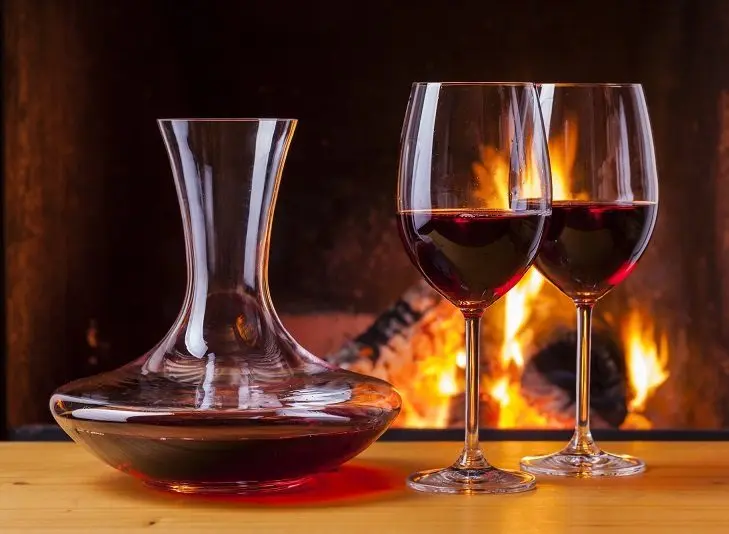Disputes about the usefulness and expediency of decanting wines do not subside until now. For some sommeliers, this is just a beautiful ritual, others see many advantages in it. We will look at the basic rules for decanting wine so that you can repeat this procedure at home if you wish.
Decanting wine – this is pouring from a bottle into a special carafe for oxygenation (aeration), cleaning from sediment at the bottom and creating a solemn atmosphere of tasting. Basically, only red wines are decanted. But there are white varieties that, after saturation with oxygen, better reveal aromatic and taste properties.
From the point of view of usefulness, decanting champagne does not make sense, it’s just a beautiful ritual.

Decanting wine began several centuries ago for a beautiful table setting. In those days, glass bottles were a luxury, and wine was sold in barrels. To look presentable, the owners of establishments began to pour the drink into decanters. There was no talk of a ritual with a clear sequence of actions; it appeared later. But even after the widespread use of bottles, the tradition of decanting remained, it acquired a new meaning.
First of all, unfiltered young red wines and drinks from Malbec, Cabernet Sauvignon, Syrah, Grenache grape varieties with aging from 2 to 15 years are subject to decantation. High-quality white Burgundy wines can also be decanted.
Simple table wines from the supermarket have no sediment and a unique taste that develops after aeration, so they do not need to be decanted.
Some sommeliers believe that before decanting a bottle of wine should be in a horizontal position for several days so that all the sediment collects on one side of the bottle. Often this rule is neglected, especially if the wine has little sediment.
Stages of wine decantation
The whole process is shown in the video. A slightly different interpretation is detailed below. Both options differ slightly, choose the one you like best.
1. Rinse the crystal carafe (decanter) with hot water.
2. Light a candle on the table, it will become an additional source of light, allowing you to see the sediment near the neck of the bottle in time.
3. Turn the wine to the guests with a label, naming its producer, appellation (wine-growing region) and vintage year.
4. Cut off the capsule under the ring, put the cut foil in your pocket. Wipe the neck of the bottle to remove plaque.
5. Remove the cork three-quarters using a lever corkscrew. Wrap your hand around it and then pull it out completely. At the same time, it is very important to prevent cotton spoiling the solemnity of the moment.
6. Examine and smell the cork; there should not be a smell of mold or mustiness, indicating the deterioration of the wine.
7. Put the cork on a saucer and put it near the guests.
8. Wipe the neck of the bottle again.
9. First, the sommelier himself tries the wine by pouring a little into his glass, turning to the guests to the right or left.
10. Slowly pour the wine from the bottle into the carafe, making sure no sediment enters the decanter. To monitor the sediment, it is better to keep the neck above the light.
11. To oxygenate the wine in the decanter, spin it clockwise several times. Before filling the glasses, it should stand for 5-10 minutes.










